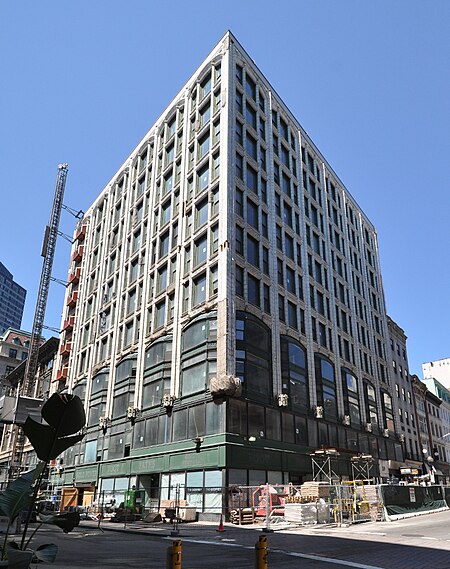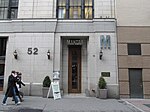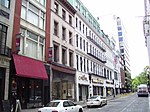Blake and Amory Building

The Blake and Amory Building is a historic commercial building at the corner of Temple Place and Washington Street in Downtown Crossing, historically the main shopping district of Boston, Massachusetts. The eleven-story building was designed by noted Boston architect Arthur Hunnewell Bowditch, and constructed in two phases between 1904 and 1908. The building is architecturally noted for its expanses of windows and Gothic details. Early tenants occupying its upper-level offices were predominantly associated with the garment and fabric trade, with the lower floors housing a variety of retail operations.The building was listed on the National Register of Historic Places in 2014. After an extensive renovation project, the Godfrey Hotel Boston opened in the historic Blake and Amory Building in 2016.
Excerpt from the Wikipedia article Blake and Amory Building (License: CC BY-SA 3.0, Authors, Images).Blake and Amory Building
Washington Street, Boston Downtown Boston
Geographical coordinates (GPS) Address Nearby Places Show on map
Geographical coordinates (GPS)
| Latitude | Longitude |
|---|---|
| N 42.354722222222 ° | E -71.061388888889 ° |
Address
George Howell Cafe
Washington Street
02102 Boston, Downtown Boston
Massachusetts, United States
Open on Google Maps








